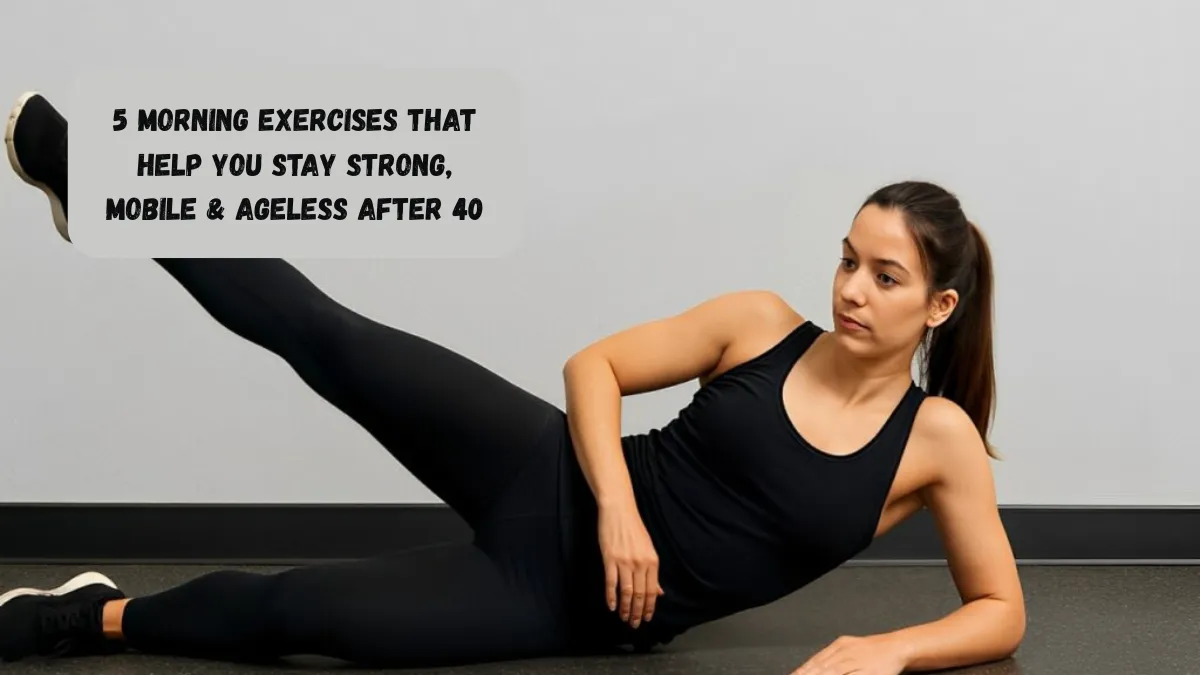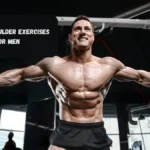Something amazing happens when you move first thing in the morning. A morning workout for people over 40 isn’t just a way to get the blood moving; it’s an investment in their health and vitality for the long run.
As we get older, our bodies naturally face problems like becoming stiffer, less flexible, and taking longer to heal. But there is good news: regular, thoughtful movement can fight these effects and get you ready for a strong, energizing day to come.
Lisa Bennett, a qualified personal trainer and mobility expert, says, “Moving in the morning gets your body and mind ready for the day.” “As we age, it’s important to stay active and feel good. It wakes up your muscles, lubricates your joints, and improves your circulation.”
The best part? You don’t need anything fancy or a lot of time to get the rewards. This easy five-exercise plan can help with balance, movement, joint health, and muscle activation in just 10 to 15 minutes. Let’s go!
1. Cat-Cow Stretch
What It Works On: balance, back flexibility, and spine movement
Why It Matters: After age 40, many people worry about back pain and bad balance. This slow flow helps open up the muscles in your back, make your spine more flexible, and get your body ready to move.
How to Do It:
You should start on all fours, with your knees under your hips and your arms under your shoulders.
As you arch your back and drop your belly to the floor, pull your head and tailbone up (Cow Pose), take a big breath in.
As you round your back toward the sky and draw your belly button in, let out a breath. This is called the Cat Pose.
Do 8–10 slow, controlled reps, making sure that each move is in time with your breath.
Bonus: Doing this stretch regularly may help keep your back pain from being caused by stress and improve your balance all day.
2. Standing Forward Fold with a Twist
What It Works On: Flexibility in the hamstrings, hip movement, and spine rotation
It’s important to know that tight legs and hips can make you feel bad and limit your movement. Adding a twist makes the core work harder and improves the ability to rotate.
How to Do It:
Keep your back straight and your feet hip-width apart. Open your hips and bend forward. Your hands can hang to the floor or rest on your shins. If you need to, bend your knees a little.
Put your right hand on the ground (or your shin) and reach your left arm up toward the sky. Gently twist your body to the left. If it feels good, look up at your raised hand.
Hold for three to five deep breaths, and then switch sides.
Bonus: This move helps ease the tightness that comes with sitting for long periods of time, which lowers the risk of lower-back pain.
3. Wall Angels
What It Works On: posture, shoulder movement, and upper-back power
Why It’s Important: Years of sitting at a desk and staring at a screen can weaken the muscles in your upper back and cause your shoulders to round. Wall angels make the muscles that support your body stronger and help your shoulders move more freely.
How to Do It:
Place your back against a wall and your feet about 6 inches from the base. Hold your head, lower back, and upper back against the wall.
Put your elbows 90 degrees out and keep them and your wrists against the wall. Move your arms slowly up and then back down to the starting position.
Do 10–12 reps, making sure to keep your body in touch with the wall the whole time.
As an added bonus, strengthening these muscles helps you stand up straighter and lowers your risk of shoulder impingement or neck pain.
4. Step-Backs (Modified Push-Ups)
What It Works On: Strength in the upper body, steadiness in the core, and balance
Why It’s Important: As we get older, keeping our upper body strong is more important than ever for doing everyday things like carrying food or moving things.
How to Do It:
Start in a high plank position with your feet flat on the ground and your arms and legs straight out in front of you.
Take one step back at a time to stand up, and then take another step forward to go back to plank. Each time you do it, switch feet.
If full pushups are too hard for you, get on your knees for extra support. Aim for eight to ten step-backs on each side.
Bonus: This low-impact version is great for older adults because it builds strength without putting too much stress on the joints.
5. Leg lifts while lying on your side
What It Works On: Stabilizing the hips, activating the glutes, and horizontal movement
Why It’s Important: Knee pain and bad balance can be caused by weak hips and glutes. By strengthening these areas, you can keep your balance and lower your risk of getting hurt.
How to Do It:
Put your legs together and lie on your side. Rest your head on your bottom arm or on your elbow.
Hold your core tight and lift your top leg up toward the sky. Make sure it stays straight but doesn’t lock. You can controllably bring it back down.
Do 10 to 12 lifts on each side, making sure the moves are smooth and deliberate.
As an added bonus, having stronger hips and glutes makes it easier to walk, climb stairs, and do other everyday things.
Why it’s important to be consistent
To see results, you don’t have to completely change your life; just make a promise to yourself to be there every morning. The goal of these workouts is to be quick, effective, and simple to add to your practice. Even if you only move for a few minutes a day, it can make a big difference in how you feel and how you can do things.
Remember that getting older is a part of life, but losing your strength and movement doesn’t have to be. Lisa Bennett tells us, “Every little bit helps.” You’re investing in a future where you can move easily and with confidence when you put your body’s needs first.
Let yourself move tomorrow morning by getting out of bed, taking a big breath, and moving. For many years, your body will be grateful.




